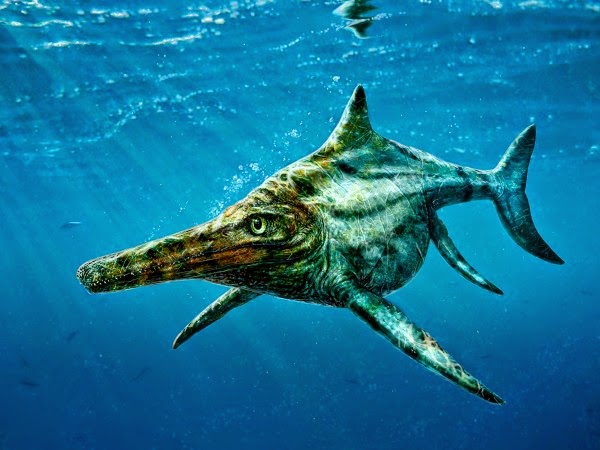
A new species of marine reptile from the Jurassic era has been identified from fossils found on the Isle of Skye.
The dolphin-like creatures were as long as 14 feet from snout to tail, and inhabited warm, shallow seas around Scotland some 170 million years ago, researchers say.
They were near the top of the food chain at the time and preyed on fish and other reptiles.
Expert team
A team of palaeontologists – led by the University and including many Scottish institutions – studied fossil fragments of skulls, teeth, vertebrae and an upper arm bone unearthed on the island over the past 50 years.
They identified several examples of extinct aquatic animals – known as ichthyosaurs – which lived during the Early-to-Middle Jurassic, including the entirely new species.
The team is the largest collaborative group of palaeontologists working in Scotland.
Their analysis of the fossil collection is the first study of ichthyosaurs found in Scotland, and many of the specimens studied have been donated to museums by amateur collectors.
Donated fossils
“During the time of dinosaurs, the waters of Scotland were prowled by big reptiles the size of motor boats. Their fossils are very rare, and only now, for the first time we’ve found a new species that was uniquely Scottish,” says Dr Steve Brusatte of the School of GeoSciences. “Without the generosity of the collector who donated the bones to a museum instead of keeping them or selling them, we would have never known that this amazing animal existed.”
The new species – Dearcmhara shawcrossi – is named in honour of an amateur enthusiast, Brian Shawcross, who recovered the creature’s fossils from the island’s Bearreraig Bay in 1959.
Dearcmhara – pronounced ‘jark vara’ – is Scottish Gaelic for marine lizard, and pays homage to the history of Skye and the Hebrides.
The species is one of the few to have ever been given a Gaelic name.
Landmass shift
During the Jurassic Period, much of Skye was under water.
At the time, it was joined to the rest of the UK and was part of a large island positioned between landmasses that gradually drifted apart and became Europe and North America.
Skye is one of the few places in the world where fossils from the Middle Jurassic Period can be found.
The team say discoveries made there could provide valuable insights into how marine reptiles evolved.
The study is published in the Scottish Journal of Geology.
“During the time of dinosaurs, the waters of Scotland were prowled by big reptiles the size of motor boats. Their fossils are very rare, and only now, for the first time we’ve found a new species that was uniquely Scottish,” says Dr Brusatte.
“Not only is this a very special discovery, but it also marks the beginning of a major new collaboration involving some of the most eminent palaeontologists in Scotland … We are excited by the programme of work and are already working on additional new finds. This is a rich heritage for Scotland,” adds Dr Nick Fraser National Museums Scotland.
Reference:
“Ichthyosaurs from the Jurassic of Skye, Scotland.” Scottish Journal of Geology, first published on January 11, 2015, DOI: 10.1144/sjg2014-018
Note : The above story is based on materials provided by University of Edinburgh.










